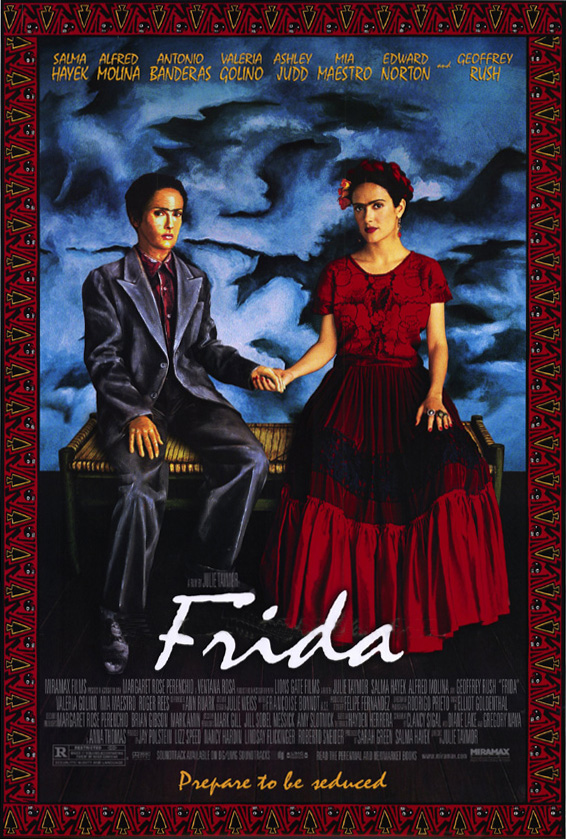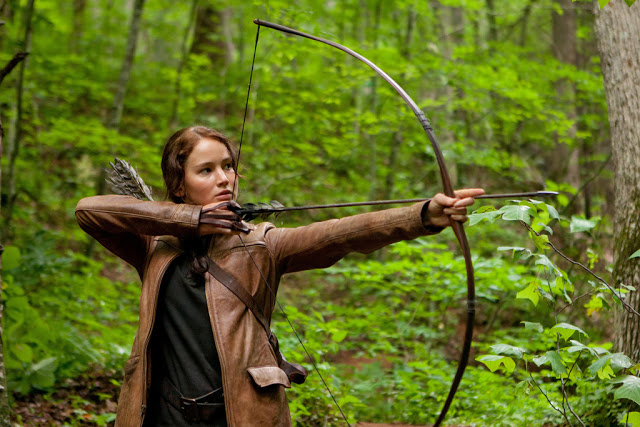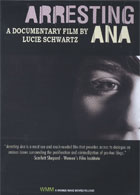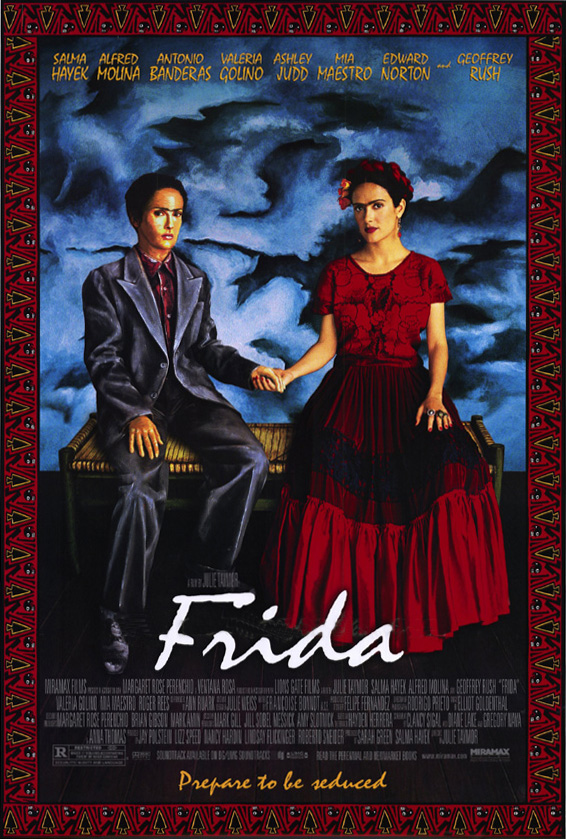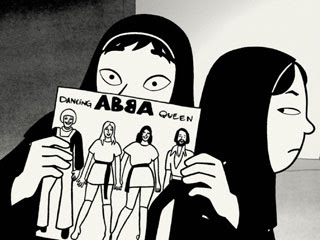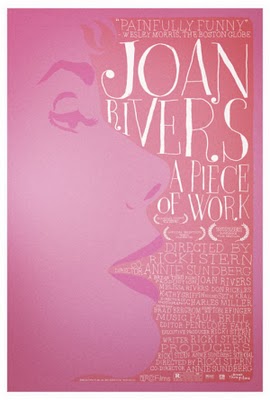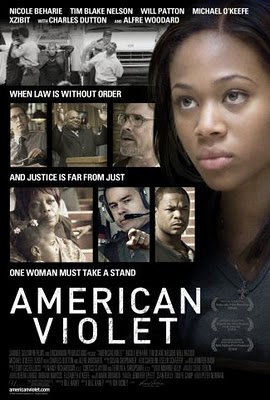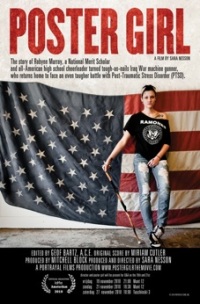Watch Tech Support:
Tag: Amber Leab
LGBTQI Week: Frida
This review by Editor and Co-Founder Amber Leab previously appeared at Bitch Flicks on March 30, 2012.
 |
| Frida (2002) |
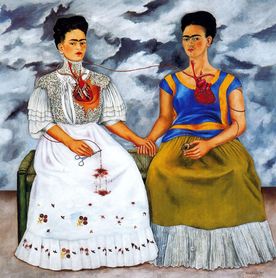 |
| Le due Frida |
Amber Leab is a writer living in Asheville, North Carolina. She holds a Master’s degree in English & Comparative Literature from the University of Cincinnati and a Bachelor’s degree in English Literature & Creative Writing from Miami University. Outside of Bitch Flicks, her work has appeared in The Georgetown Review, on the blogs Shakesville, Opinioness of the World, and I Will Not Diet, and at True Theatre.
Reproduction & Abortion Week: When Abortion Was Illegal
This piece on When Abortion Was Illegal, by Amber Leab, originally appeared at Bitch Flicks on June 17, 2009.
———-
In this 1992 documentary directed by Dorothy Fadiman, women (and men) tell their stories about illegal abortions, reminding us of the necessity of safe and legal access for women.
The film was nominated for an Academy Award for Best Documentary Short in 1993, and is the first in a three-part series about abortion in America.
The other two films in the series, From Danger to Dignity: The Fight for Safe Abortion and The Fragile Promise of Choice: Abortion in the U.S. Today, are also available for free online.
Reproduction and Abortion Week: Friday Night Lights
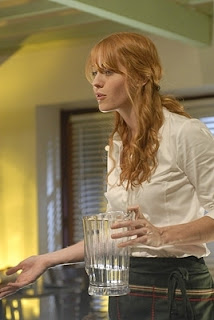 |
| Tamara Jolaine as Erin |
You need to stop … You do not get to put that on me. I’m not some experiment for you to prove your manhood, Jason. This is my body. I am going to make the ultimate decision.
Erin pinpoints the way women’s bodies are so often used as battlegrounds for men trying to advance an agenda, personal or political. Jason’s injury has made him so desperate for a chance to be strong and important and yes, masculine again, that he loses any sense that she is a person, too. Jason can’t control his own body, so he wants to control hers.
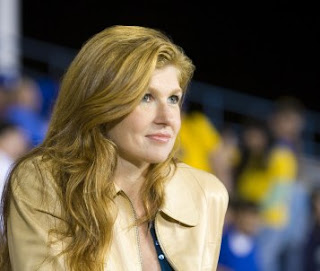 |
| Connie Britton as Tami Taylor |
“How pregnant do you want to be? Because you’re extremely pregnant.”
When Tami looks less than happy about the news, Corinna asks her, “Do you want to be pregnant?” A teary-eyed Tami responds:
Do I want to be pregnant? Do I want to be pregnant? I don’t know. […] We planned it, like, thirteen years ago. And then twelve years ago, and then eleven years ago, and then ten years ago.
The show skips most of Tami’s actual pregnancy (it occurs during the break between the first and second seasons), but picks up the story and closely follows her experience as a new mother, even if it is her second time around. With all her privilege and advantages, balancing work, family, and her own personal life is still a challenge. Her teenage daughter proves less than supportive, her husband is largely absent due to work, and she certainly could have benefited from some on-site childcare when she returns to her job at the school. Overall, Friday Night Lights does an excellent job of portraying a family that believed it was complete dealing with an unplanned pregnancy and a new baby.
We don’t have any money. I’m in the 10th grade, and it’s my first time. And I threw it way, and I don’t want to throw my life away. It’s just really obvious that my mom wants me to have this abortion. Because I was her mistake and she has just struggled and hurt everyday, and she wanted better and I knew better. And then I was just thinking, you know, forget what she wants, like, what do I want? And maybe I could take care of this baby, and maybe I would be good at it, and I could love it and I would be there for it. And then I was just thinking how awful it would be if I had the baby and then I spent the rest of my life resenting it, or her.
Those around her (her mother, the mother of the baby’s father, the community) seem more upset and emotionally reactionary than Becky herself. It also seems that the extreme reactions of those around her affect her more than the abortion itself […] Abortion, it would seem, is not the issue; the hysteria surrounding it is.
‘The Hunger Games’ Review in Conversation: Part 1 on Jennifer Lawrence, Female Protagonists, Body Image, Disability, Whitewashing, Hunger & Food
 |
| Jennifer Lawrence as Katniss Everdeen in The Hunger Games |
Part 1 of the Review in Conversation on The Hunger Games.
Megan’s Take:
In a dystopian future, the nation of Panem stands where North America once existed. The government at the Capitol, which controls the country, mandates a girl and boy between the ages of 12 and 18 are selected by lottery in each of the 12 Districts as tributes to compete in a fight to the death called the Hunger Games aired on live television. 16-year-old Katniss Everdeen volunteers when her little sister Prim’s name is called. But in the Hunger Games, only one person can survive.
 |
| Jennifer Lawrence as Katniss |
I thought the movie was fantastic. I often lament the lack of strong female protagonists in film. We desperately need more characters like Katniss on-screen. A skilled archer, Katniss is smart, stubborn, brave, abrasive and self-reliant. She not only fights for her own survival; she’s compelled to protect her family. Living in the most impoverished neighborhood in the poorest of the 12 Districts, Katniss is the resourceful breadwinner, illegally hunting for food to feed her family. She’s a surrogate mother to her sister Prim and even her own traumatized mother, grief-stricken over the death of her daughters’ father. Despite her tough exterior, she possesses a vulnerability. What makes Katniss unique is that she “feels empathy when nobody else does.” She’s compelled to defend others, even her competition.
 |
| Jennifer Lawrence as Katniss |
 |
| Jennifer Lawrence as Katniss |
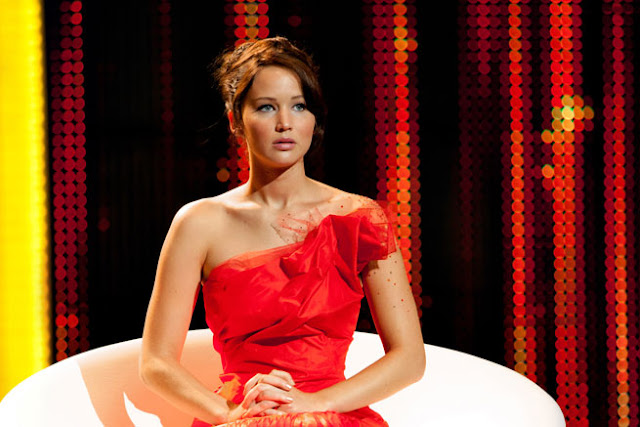 |
| Jennifer Lawrence as Katniss |
Much has been said about Lawrence’s body, but I’m not really interested in analyzing it—the incessant discussion of female bodies is part of the problem. What I do want to discuss is the film’s handling of food and hunger (a conversation I think many people are sincerely trying to have who end up derailing into critiques of Lawrence’s body). Everyone in District 12 is hungry, including Katniss. Winning the Hunger Games isn’t just about surviving; it’s also about bringing extra food home to your district—especially important for the poorer areas. The Capitol uses hunger as a political tool—a fact that doesn’t come through clearly enough in the movie. (An anecdote: The person who saw the movie with me didn’t understand why it was called The Hunger Games.)
In the book, Katniss eats and enjoys the plentiful food provided to her in the lead up to the game. She finds a particular lamb stew rich and delicious and she enjoys eating it until she’s full. For a girl who’s been hungry much of her life, the food available on that train trip would be irresistible. Yet in the movie, Katniss seems uninterested, even immune to the lavish spread. Is there a reason Katniss can’t enjoy a hearty stew to fortify herself for the impending game? This de-emphasis of food changes the character of the story dramatically. Remember the moment when Gale presents a roll to Katniss in the woods and she exclaims “Is this real?!” and they break the roll to enjoy together? The berries Katniss and Peeta threaten to eat in their Romeo-and-Juliet-style sabotage of the game? The story of nourishment and consumption takes a major hit when the movie doesn’t permit Katniss to eat and enjoy food and, for me, this might trump whatever positive body-image message might be implied by the decision to cast Lawrence without regard to the “underfed” description in the casting call, and without regard to her adult status.
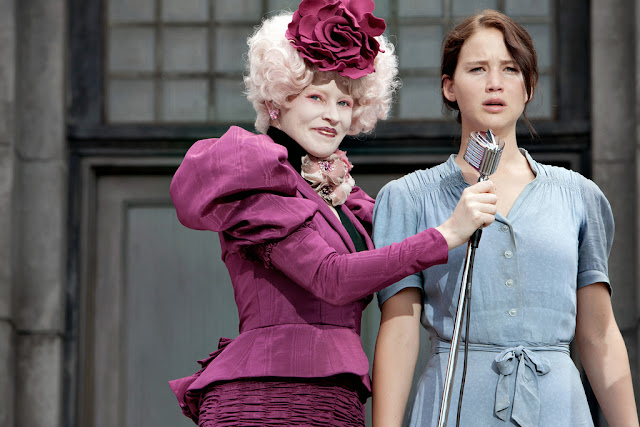 |
| Elizabeth Banks as Effie Trinket and Jennifer Lawrence as Katniss Everdeen |
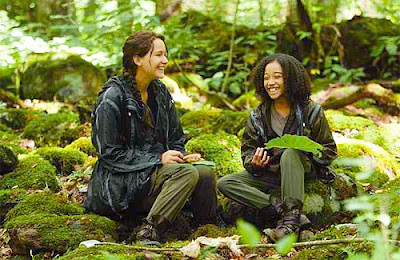 |
| Jennifer Lawrence and Amandla Stenberg as Rue |
I too didn’t understand the de-emphasis of food and hunger. In reality, 1 in 6 children suffer from hunger. And I too loved Collins’ descriptions of food, like Katniss relishing her favorite nourishing lamb (dislike) stew with dried plums (yum!) and the sweetness of hot chocolate touching her lips for the first time. And of course there was the continual symbol of bread — the warm and fragrant bread accompanied by Prim’s cheese Katniss eats with Gale, or Peeta’s burned bread that saves her life years earlier, or District 11 sending Katniss a loaf of bread for her alliance with Rue (who was from District 11) as a symbol of solidarity and quiet revolution, which the film eliminates, showing the citizens (many of whom are people of color) rioting instead.
In a way, it’s funny that we haven’t really talked about violence, and how — in order to get a PG-13 rating — the film sanitized violence. The books are intended for a Young Adult audience, but are filled with brutal murders. The movie is, too, and I think we could see the de-emphasis of violence as either positive or negative: Positive in that the movie doesn’t glorify violence, or depict it graphically (which movies do too much of in general), but bad in that the movie isn’t as dark or complex as it could have been. While I realize that a filmmaker must make difficult choices when adapting a book (series), every choice made about The Hunger Gamesmade it safer — and more likely to not put off, offend, or disturb mainstream viewers. In essence, making it a successful blockbuster.
Amber Leab is a Co-Founder and Contributing Editor to Bitch Flicks.
Up with Chris Hayes: News Program Has a Conversation about Women and Media That Lasts Longer Than 90 Seconds
Arresting Ana: A Short Film about Pro-Anorexia Websites
 |
| Arresting Ana (2009) |
Arresting Ana tells the story of the potential criminalization of the pro-anorexia movement in France. The film follows two women: Sarah, an 18-year-old college student with a ‘pro-Ana’ blog, an online forum on which she shares tips and tricks with other young women on how to become anorexic, and Valerie Boyer, a passionate legislator who is proposing a ground-breaking bill that aims to ban pro-Ana websites by issuing $30,000 fines and 2-year prison sentences to members of this online underground movement.
Biopic and Documentary Week: Frida
 |
| Frida (2002) |
 |
| Le due Frida |
Biopic and Documentary Week: Persepolis
Biopic and Documentary Week: Joan Rivers: A Piece of Work
 |
| Joan Rivers: A Piece of Work (2010) |
 , The Devil Came on Horseback
, The Devil Came on Horseback , and the forthcoming Burma Soldier, among others. It’s about a mouthy broad (and I love mouthy broads, women who speak their minds and aren’t afraid to put themselves out there), who is funny, and who has been at it since 1966. On the other hand, it’s yet another film about a wealthy white woman (I just watched and reviewed The September Issue, about Vogue editor-in-chief Anna Wintour) who lives like “Marie Antoinette, if she’d have had money.”
, and the forthcoming Burma Soldier, among others. It’s about a mouthy broad (and I love mouthy broads, women who speak their minds and aren’t afraid to put themselves out there), who is funny, and who has been at it since 1966. On the other hand, it’s yet another film about a wealthy white woman (I just watched and reviewed The September Issue, about Vogue editor-in-chief Anna Wintour) who lives like “Marie Antoinette, if she’d have had money.”Biopic and Documentary Week: American Violet
This piece on American Violet, by Amber Leab, originally appeared at Bitch Flicks on April 5, 2010.
 |
| American Violet (2008) |
Biopic and Documentary Week: Poster Girl
 |
| Poster Girl (2010) |
